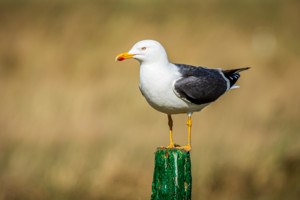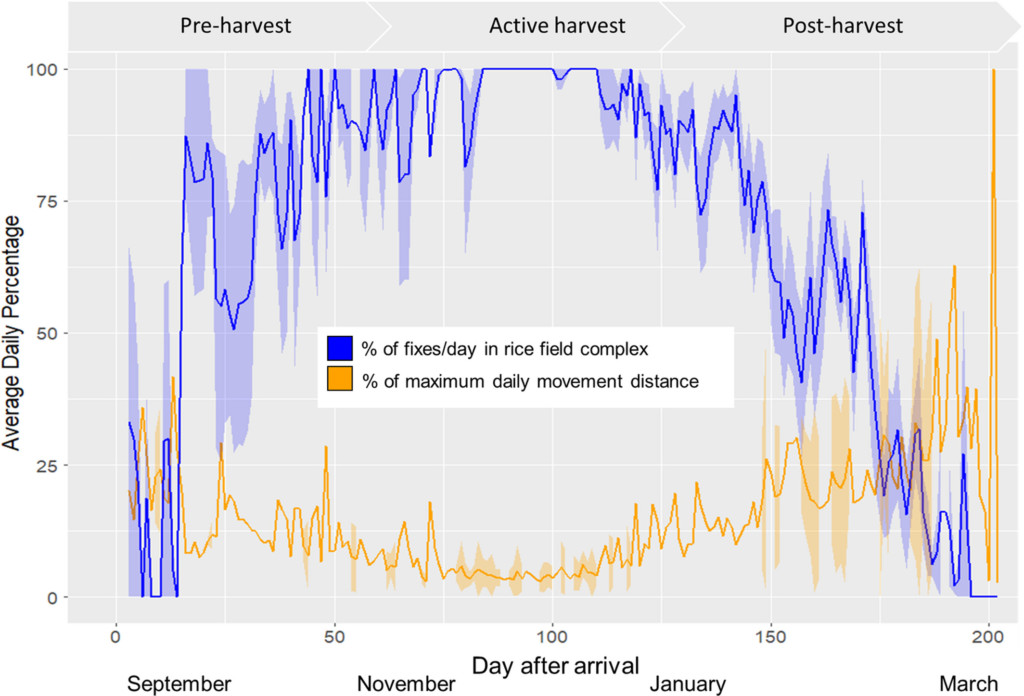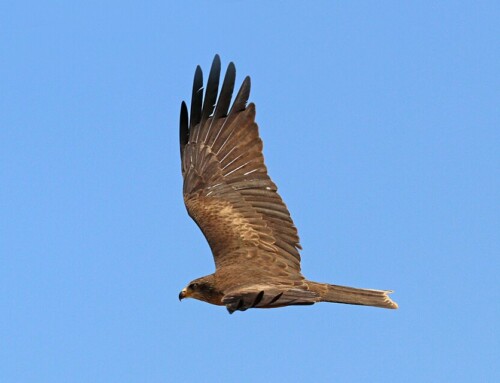
LINKED PAPER
Dynamic space use of Andalusian rice fields by Lesser Black-backed Gulls (Larus fuscus) is driven by flooding pattern. van Rees, C. B., Aragonés, D., Bouten, W., Thaxter, C. B., Stienen, E. W., Bustamante, J., & Green, A. J. 2021. IBIS. DOI: 10.1111/ibi.12968. VIEW
Many bird species are adapting their behaviour to human activities. In Andalusia (Spain), for example, overwintering Lesser Black-backed Gulls (Larus fuscus) seem to adjust their daily movements to the harvest cycle of local rice paddies. A team of international ornithologists came to this conclusion after studying the behavior of these gulls in Doñana National Park in southwestern Spain. And although this information can inform conservation efforts to protect the Lesser Black-backed Gull (which is of conservation concern in the EU), it also raises questions on whether these birds might contribute to the spread of plastic debris and invasive species into the protected areas.
Foraging and roosting
Charles van Rees and his colleagues used GPS-data from six Lesser Black-backed Gulls to map their movement patterns in Andalusia (Bouten et al. 2013). Extensive analyses showed how the behavior of these birds closely follows the harvesting of rice paddies. During the pre-harvest period, the gulls resided in the rice fields during the day but roosted at nearby artificial fish ponds at night. Once the rice harvest started, the birds started to spend the night in the rice fields. They probably foraged on spilled rice and crayfish (Procramburus clarkii) that become exposed during harvesting (Lovas-Kiss et al. 2018). After the harvest, the gulls continued to roost in the rice fields but travelled to landfills for foraging. The GPS-based behavioral patterns of these six birds – a relatively low sample size to draw general conclusions – were validated with additional field observations.

Figure 1. Time series of Lesser Black-backed Gull behaviour within the rice fields across the overwintering season. The average daily percentage of time per day spent within the rice paddies (blue line) increased during the pre-harvest phase, reached a maximum during the active harvest phase, and declined during the post-harvest phase. The yellow line depicts the daily movement activity and shows the opposite pattern.
Plastic and more
These findings nicely show how Lesser Black-backed Gulls adjust their behaviour to human activities. Although the birds might benefit from their behavioural flexibility, they might threaten the integrity of the protected areas they rely on. While foraging in the landfills, gulls tend to ingest plastic debris which they consequently transport into the rice paddies (Seif et al. 2018). Moreover, the increasing abundance of Lesser Black-backed Gulls in the rice fields might result in a significant influx of nitrogen and phosphorus. These extra nutrients can contribute to the eutrophication of freshwater ecosystems (Winton & River 2017). Finally, Lesser Black-backed Gulls might disperse pathogens, weeds and invasive species, between roosting and foraging habitats. The examples illustrate how human activities could indirectly impact the functioning of local ecosystems and ultimately have dire consequences for the original human activity itself. And to think it all started with a Lesser Black-backed Gull looking for some tasty rice.
References
Bouten, W., Baaij, E.W., Shamoun-Baranes, J. & Camphuysen, K.C. (2013). A flexible GPS tracking system for studying bird behaviour at multiple scales. Journal of Ornithology 154: 571– 580. VIEW
Lovas-Kiss, Á., Sánchez, M.I., Molnár V., A., Valls, L., Armengol, X., Mesquita-Joanes, F. & Green, A.J. (2018). Crayfish invasion facilitates dispersal of plants and invertebrates by gulls. Freshwater Biology 63: 392– 404. VIEW
Seif, S., Provencher, J.F., Avery-Gomm, S., Daoust, P.-Y., Mallory, M.L. & Smith, P.A. (2018). Plastic and non-plastic debris ingestion in three gull species feeding in an urban landfill environment. Archives of Environmental Contamination and Toxicology 74: 349– 360. VIEW
Winton, R.S. & River, M. (2017). The biogeochemical implications of massive gull flocks at landfills. Water Research 122: 440– 446. VIEW
Image credits
Top right: Lesser Black-backed Gulls (Larus fuscus) | Stephan Sprinz | CC BY-SA 4.0 Wikimedia Commons
Blog posts express the views of the individual author(s) and not those of the BOU.
If you want to write about your research in #theBOUblog, then please see here





